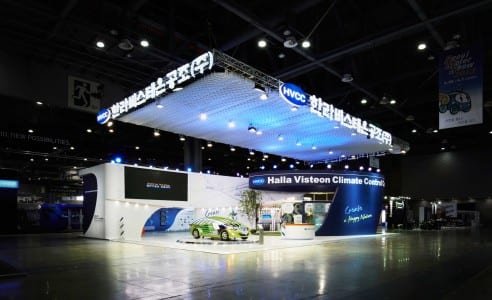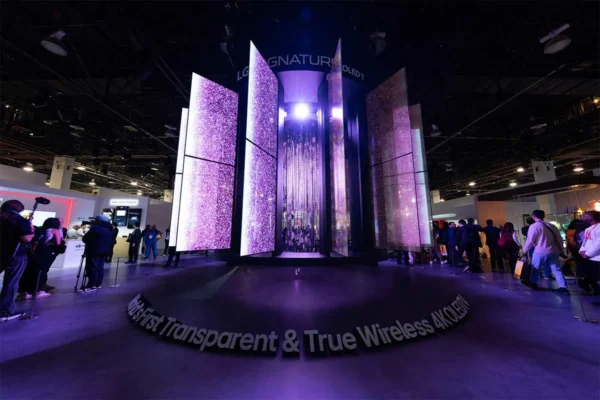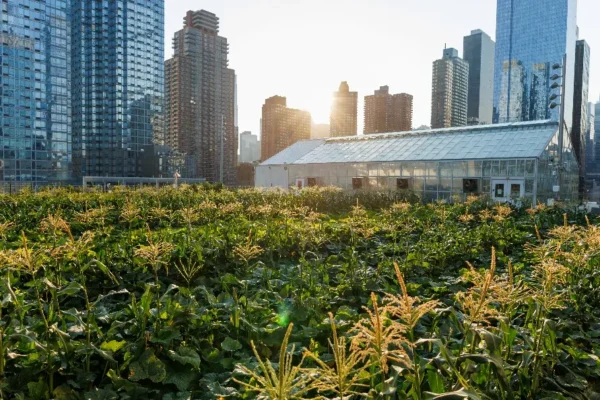Tradeshows are one of the most valuable platforms for establishing and maintaining customer relations. In an increasingly digital age, it is the largest avenue where buyers, sellers and products can meet to interact face to face. While exhibitions serve as a valuable portal for companies to reach the masses, the success of one’s tradeshow participation hinges on communication – especially brand messaging, effective marketing strategies, design and technology.
Before deciding on the type of booth to use, whether it is a custom-designed stand or a rental exhibit, companies should determine their key goals – unveiling new products or services, raising brand awareness or increasing sales through qualified leads. Identifying the main message to focus on and integrating it into tradeshow marketing strategies is a critical starting point as distinct messaging has the effect of allowing visitors to self-educate. Tradeshows are about communication. Architecture with a striking façade can attract attention; however, it is the ease with which brands communicate their service offerings to prospective customers that will determine success.

Targeted pre-show marketing is also an important aspect to consider. From direct mailers to advertising in trade publications and issuing press releases, media and prospects are informed of exhibitors on the tradeshow floor. Time to impress is minimal and stand design is the central element to the impression that an audience receives about a company. To an uninterested visitor, an attractive stand will plant a seed. To a prospect, it could tip the balance. To an existing customer, it should reaffirm a positive impression of the company. It gets easy to be lost in a sea of tradeshow stands; therefore, some of the most effective designs emphasize a single focal point for maximum impact, clean lines to showcase key messages and open spaces. Recent trends include lounge spaces within the booth with phone charging areas and comfortable seating. Materials such as fabric, plywood and laminate are increasingly being replaced with textural materials that provide an authentic experience. Strategic lighting fixtures can be used to set the mood, depth and highlight a particular product that the exhibitor wishes to introduce. From building advocacy to closing sales on the tradeshow floor, having a well-equipped space that provides privacy is essential; and if exhibitors are looking to enhance their stand design, they can include tradeshow flooring in their plans.
Since stand design serves as a visual communication tool, exhibitors should utilize design elements to their advantage and consider current perceptions of their brand. They must understand the importance of their communication intentions and, more so, their customers’ experience expectations. Technology is often incorporated to differentiate, but is only useful if it assists with the communication and experiential journey of the prospect. Digital elements like interactive touch screens educate consumers, reinforce brand messaging and help them retain information for longer periods of time. One of the ultimate goals should be to create multiple interaction points for sustaining engagement so that visitors can experience multiple activations, resulting in deeper levels of emotional connection with the brand. While the booth is a temporary fixture, the idea is to create a space that has a feeling of permanence and one that engages the customer.

After investing in pre-show marketing campaigns, a winning display and the latest technologies, the final step to ensure the success of the tradeshow stand is selecting the right people to man the booth. They carry the responsibilities of pre-qualifying the show visitors, establishing the relationships that convert prospects into leads and personifying the brand image. Once exhibitors have that under their belt, they will be able to make each successive show their most profitable one to date.
The contributor is the sales & marketing director of Kingsmen Exhibits Pte Ltd, a leading communication design and production group in Asia Pacific and the Middle East.





























